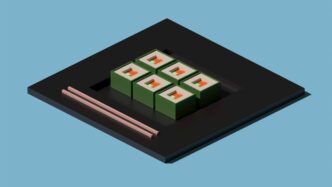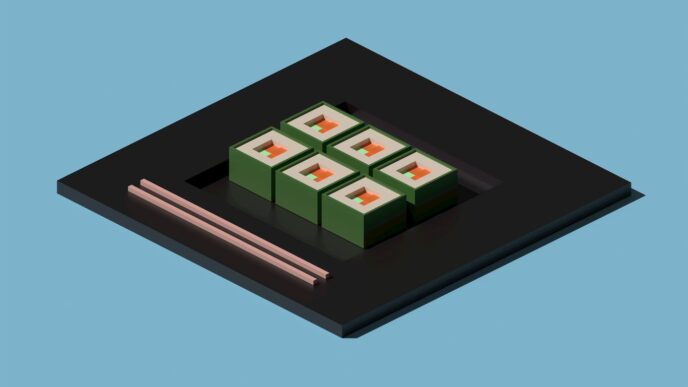When it comes to achieving a more muscular physique, fitness enthusiasts often turn to various supplements to enhance their workouts and maximize gains. One popular supplement that has gained attention for its potential to increase muscle size and strength is creatine. But does it live up to its promise of noticeable gains?
THE EFFECT OF CREATINE ON PHYSICAL APPEARANCE
Renowned fitness expert and researcher, Lauren Graham, has explored the effects of creatine on physical appearance in her comprehensive study titled “Does Creatine Make You Look Bigger?” published on FeastGood. Graham dives into the science behind creatine supplementation and its impact on muscle size.
UNDERSTANDING CREATINE AND ITS ABSORPTION
Graham’s research uncovers that creatine is a naturally occurring compound found in small amounts in meat and fish. When taken as a supplement, it quickly gets absorbed by the muscles and stored as phosphocreatine, a high-energy molecule that fuels short bursts of intense exercise. By increasing phosphocreatine availability, creatine supplementation may enhance performance during strength training exercises.
LOOKING BIGGER: A COMPLEX PICTURE
Creatine supplementation has long been associated with increased muscle mass and strength gains. However, it’s important to note that looking “bigger” goes beyond mere appearances. While creatine can lead to weight gain, its primary impact is on muscle tissue rather than body fat. Thus, how creatine affects your appearance depends on factors like your training routine, diet, and individual body composition.
TEMPORARY WATER RETENTION
Starting creatine supplements may initially result in weight gain. This is mainly due to water retention within muscle cells. Creatine attracts water into the muscles, leading to increased hydration and swelling of muscle fibers. As a result, muscles may appear fuller and more voluminous. However, it’s crucial to understand that this initial water weight gain is temporary and may not result in significant long-term changes in appearance.
MAXIMIZING CREATINE’S BENEFITS
To maximize the potential benefits of creatine supplementation, combining it with a well-structured weight training program is crucial. Creatine increases the production of adenosine triphosphate (ATP), the primary energy source for muscle contractions during intense exercise. By enhancing ATP availability, creatine allows you to push harder and longer during workouts, leading to greater muscle stimulation and potential growth.
CREATINE MONOHYDRATE: THE KEY TO MUSCLE MASS
Among creatine supplements, creatine monohydrate is the most commonly used and thoroughly researched form. It has consistently demonstrated its effectiveness in increasing lean muscle mass. Creatine monohydrate is readily absorbed by the muscles and stored as creatine phosphate, readily available for high-intensity activities.
THE SYNERGY OF CREATINE, TRAINING, AND NUTRITION
Taking creatine monohydrate supplements and following a proper training program can improve muscle size and strength. However, it’s important to understand that creatine alone will not automatically result in massive gains. The key lies in the synergy between creatine supplementation, progressive resistance training, and proper nutrition. Engaging in regular weight training exercises that target different muscle groups while progressively increasing intensity and volume over time provides the necessary stimulus for muscle growth. Additionally, a balanced diet that includes adequate protein, carbohydrates, and healthy fats is essential for supporting muscle repair and growth.
CREATINE: NOT A SHORTCUT TO INSTANT “BIGGER” MUSCLES
While creatine supplementation can contribute to increased muscle mass, it’s not a magical solution for instant muscle growth. The effects of creatine on appearance vary depending on factors such as your training routine, diet, and individual response to supplementation. Combining creatine with proper training and nutrition can maximize its benefits and enhance overall muscle development.
UNDERSTANDING THE IMPACT OF CREATINE ON LEAN MUSCLE MASS
Creatine supplementation has been extensively studied, and its positive impact on lean muscle mass has been well-documented. When combined with resistance training, creatine can help individuals gain muscle mass and improve their body composition.
One of the ways creatine promotes muscle growth is by increasing the stores of phosphocreatine in skeletal muscle. Phosphocreatine is an energy source used during high-intensity activities like weightlifting or sprinting. By elevating creatine levels in the muscles, individuals have greater access to phosphocreatine, leading to enhanced strength and power output during exercise.
Additionally, creatine stimulates the synthesis of proteins, which are the building blocks of muscle tissue. This increase in protein synthesis allows for the repair and growth of muscle fibers, resulting in greater muscle mass over time.
It’s important to note that while creatine supplementation can lead to weight gain, this is primarily due to increased lean body mass rather than fat accumulation. Creatine itself does not directly cause fat gain. However, if caloric intake exceeds expenditure, it is possible to gain both muscle and fat. Therefore, maintaining a balanced diet and monitoring overall caloric intake is crucial when supplementing with creatine.
COMBINING CREATINE AND EXERCISE FOR BODY COMPOSITION GOALS
To effectively achieve body composition goals, combining creatine supplementation with regular exercise is highly beneficial. While some individuals may experience weight gain due to creatine use, this weight gain is primarily attributed to an increase in lean body mass rather than fat accumulation. By incorporating creatine into a fitness routine alongside targeted exercise, optimal results can be achieved and progress can be made towards desired body composition.
Creatine supplementation enhances the ability to perform intense workouts by providing additional energy. This, in turn, improves muscle strength and size. When combined with a well-designed exercise program that includes resistance training, creatine can help individuals build muscle and sculpt their physiques.
However, it’s important to note that creatine supplementation alone is not sufficient to achieve body composition goals. A healthy diet is crucial for supporting muscle repair and growth. A balanced and nutrient-dense diet that includes adequate protein, carbohydrates, and healthy fats provides the necessary building blocks for muscle development. By combining creatine supplementation, exercise, and a healthy diet, individuals can create an optimal environment for achieving their desired body composition.
UNDERSTANDING THE PERFORMANCE AND TRAINING BENEFITS OF CREATINE
Creatine supplementation has been extensively studied and has shown positive effects on athletic performance and training adaptations. By increasing the body’s creatine stores, athletes and fitness enthusiasts can experience enhanced physical performance, improved muscle strength, and power gains.
One of the key benefits of creatine supplementation is its ability to help individuals build muscle mass. By increasing the availability of phosphocreatine, creatine enables athletes to generate greater force and power during high-intensity activities such as weightlifting or sprinting. This leads to improved muscular strength, allowing athletes to lift heavier weights or perform explosive movements with greater ease.
Creatine also enhances training adaptations by increasing the capacity to perform high-intensity exercise. By allowing individuals to push harder during their workouts, creatine creates a greater training stimulus. This can result in increased muscle hypertrophy, improved anaerobic capacity, and overall better athletic performance.
SAFETY AND CONSIDERATIONS
Creatine supplementation is generally considered safe for most individuals when used within recommended dosages. However, it’s important to be aware of potential side effects and considerations associated with creatine use.
Muscle cramps are occasionally reported as a side effect of creatine supplements, but these occurrences are rare and can often be attributed to inadequate hydration or improper dosing. Staying well-hydrated and following proper dosing guidelines can help minimize the risk of experiencing muscle cramps.
Concerns regarding weight gain and the potential for gaining fat when using creatine have been raised. However, it’s important to note that creatine itself does not directly cause fat gain. The weight gain observed in some individuals is primarily due to increased lean muscle mass. It is essential to maintain a balanced diet and monitor overall caloric intake to avoid unwanted weight gain while maximizing the benefits of creatine supplementation.
Extensive research supports the safety profile of creatine when used as directed. It is not associated with long-term adverse health effects and is not considered a banned substance in most sports. However, as with any dietary supplement, it is advisable to consult with a healthcare professional or a sports nutritionist before starting creatine supplementation, especially if you have any pre-existing medical conditions or are taking medications.
THE BEST WAY TO TAKE CREATINE
The most effective and common way to take creatine is through a loading phase followed by a maintenance phase. During the loading phase, individuals consume around 20 grams of creatine daily for 5-7 days. This allows the muscles to quickly saturate with creatine, maximizing its availability for energy production. After the loading phase, a maintenance dose of 3-5 grams daily is typically sufficient to maintain elevated muscle creatine levels.
To enhance muscle uptake, it is recommended to take creatine with a source of carbohydrates or a high-glycemic index beverage. Carbohydrates stimulate the release of insulin, which helps transport creatine into the muscle cells more efficiently. Additionally, taking creatine with a post-workout meal or shake can be beneficial, as the increased blood flow to the muscles during this time aids in the delivery of creatine to the muscle cells.
Consistency is key when taking creatine to ensure optimal results. Taking creatine daily, even on rest days, is recommended to maintain high muscle creatine stores. It is also important to follow the recommended dosage guidelines and stay within the recommended amounts.
CONCLUSION
In conclusion, creatine supplementation can be a valuable tool for individuals seeking to improve their muscle size, strength, and overall body composition. When combined with a well-designed exercise program and a balanced diet, creatine can enhance athletic performance, promote muscle growth, and help individuals achieve their fitness goals. However, it is crucial to approach creatine supplementation responsibly, follow recommended dosages, and consult with a healthcare professional or sports nutritionist if needed. By incorporating creatine into a comprehensive fitness regimen, individuals can unlock their full potential and make noticeable progress towards their desired physique.
Interested in adding Creatine to your regiment? Try the World’s First Creatine Gummies today!
Bear Balanced® | World’s First Creatine Gummies®: https://www.bearbalanced.com/blogs/creatine/does-creatine-build-muscle













